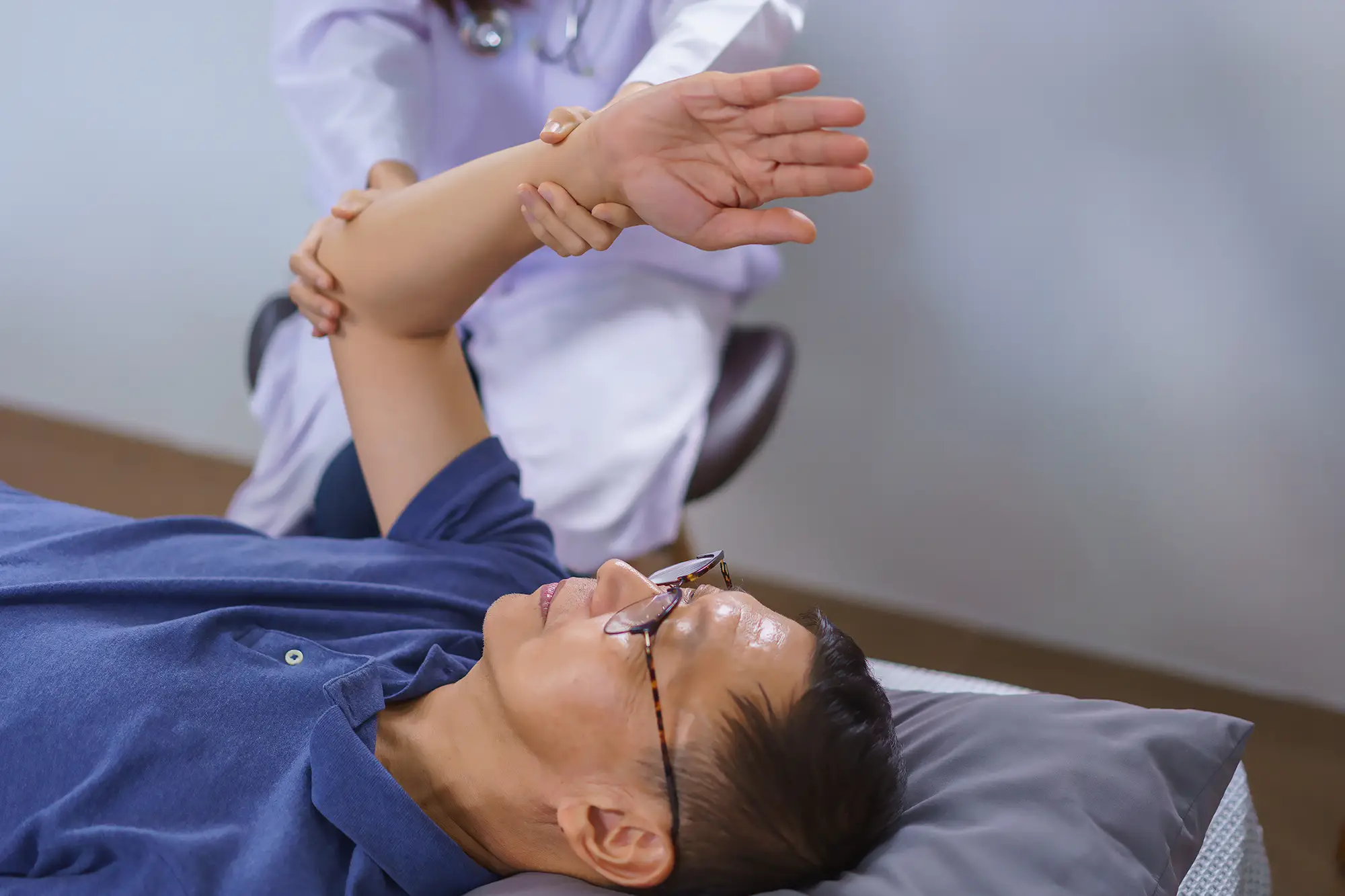Manual Therapy offers a clear approach to reducing discomfort and improving movement using hands-on techniques. Many people struggle with chronic pain and limited mobility, and this post explains how manual therapy works to ease these issues. We cover its mechanisms, sample techniques, and conditions it addresses, providing insights that help in making informed care decisions. If you seek relief and better movement, this guide shows you a path forward with practical hands-on methods.
What Is Manual Therapy?
Manual therapy involves hands-on techniques aimed at reducing pain and improving mobility. Its rich history supports methods such as the muscle energy technique and addresses issues like myofascial trigger point discomfort. The approach emphasizes patient education and factors like insurance coverage, offering practical insights for those seeking non-invasive care.
Defining Manual Therapy and Its Purpose
Manual therapy consists of carefully applied physical techniques that aim to relieve pain and improve muscle tone while addressing issues like adhesion and friction between tissue layers. A review of evidence from a randomized controlled trial supports the benefits of these hands-on techniques, often offering a meaningful alternative to surgery in pain management and mobility improvement.
This approach focuses on practical methods and therapeutic movements to ease discomfort and improve movement efficiency. Manual therapy stands out due to its ability to target adhesion normalizing muscle tone and reducing friction between tissues, helping patients regain improved function without invasive procedures.
Historical Background of Manual Therapy
Historical records show that early manual therapy methods grew alongside advancements in bone studies, physiology, and the evolving role of the physician in health care. Practitioners used practical hands-on techniques to address pain and tissue adhesion, reflecting a growing understanding of the body’s structure and function.
The history of manual therapy features methods that incorporated gentle oscillation techniques to relieve discomfort, influenced by early observations of muscle movement and bone alignment. Physicians played a key role in developing these methods, laying a foundation that modern health care continues to build upon.
Mechanisms of Action in Manual Therapy
Manual therapy employs hands-on techniques to reduce pain and enhance mobility through precise evaluation and improved posture. Its efficacy in primary care settings underscores practical benefits in pain reduction. The following sections offer insights into how these methods achieve relief and support functional movement, ensuring clear, beneficial outcomes for patients.
How Hands-on Techniques Influence Pain Relief
Hands-on techniques improve pain relief by applying targeted pressure to muscle groups and areas around the pelvis, helping to release tightness and restore natural alignment. This method supports proper blood flow and incorporates principles similar to the mckenzie method to promote tissue flexibility and reduce muscle tension.
Practitioners use precise manual techniques to relieve pressure on sensitive regions, leading to a reduction in discomfort and an improvement in mobility. The approach benefits patients by using consistent, focused movements on muscles and joints, encouraging natural healing and better function overall.
The Role of Manual Therapy in Improving Mobility
Manual therapy addresses mobility issues by targeting areas of scar tissue and muscle strain that limit movement. Through precise hands-on techniques, practitioners help reduce discomfort and reduce the reliance on medication, making therapy a practical alternative for those affected by chronic disease.
This approach also focuses on restoring the body’s energy balance and improving overall function to combat mobility challenges. Patients gain relief as special techniques are applied to ease strain and foster healthier tissue, contributing to a more active lifestyle without invasive procedures.
Different Techniques in Manual Therapy
This section covers soft tissue mobilization, joint manipulation and mobilization, myofascial release techniques, and craniosacral therapy. A doctor of physical therapy with specialized education outlines how these methods relieve tension, support health, and improve movement, offering clear insights into practical hands-on techniques for pain relief and enhanced mobility.
Soft Tissue Mobilization
Soft tissue mobilization in manual therapy involves carefully applied techniques that target muscle and connective tissue restrictions, aiding in the management of discomfort around the hip and knee. This approach improves endurance by enhancing circulation in the affected areas, providing practical relief for individuals facing persistent pain through targeted myofascial release methods.
Practitioners skillfully use soft tissue mobilization to restore proper movement and reduce tightness in key areas, fostering improved range of motion and overall functionality. The process supports pain management strategies while offering a hands-on solution that is both effective and directly applicable to the needs of those experiencing limitations in mobility and daily activities.
Joint Manipulation and Mobilization
Joint manipulation and mobilization in manual therapy applies focused movements that refine anatomical alignment, supporting physical therapy approaches and reducing muscle spasm. Practical research shows these techniques can ease stiffness and address fatigue, offering valuable relief for individuals with persistent discomfort. By utilizing skilled physical therapy interventions, practitioners help restore joint function and improve overall mobility.
These hands-on methods work through precise adjustments that consider the body’s anatomy and the latest research in pain management. The treatment often alleviates issues such as muscle tension and fatigue by addressing underlying joint misalignments. Patients benefit from improved movement and reduced discomfort, making the therapy a reliable option in clinical settings.
Myofascial Release Techniques
Myofascial release techniques focus on alleviating stress by targeting soft tissue restrictions and releasing tension within the tissue. A clinical trial has shown that these methods effectively reduce amplitude of pain and improve overall movement, offering a practical option for individuals seeking to reduce discomfort associated with tight muscles.
The approach uses targeted manual techniques to gently stretch and relax the fascia surrounding muscles, diminishing tissue stress and restoring flexibility. Practitioners observe measurable improvements in patients’ range of motion and pain relief, supporting the use of these techniques as a valuable addition to pain management strategies.
Craniosacral Therapy
Craniosacral therapy applies gentle force to specific points on the head and shoulder area to improve the flow of cerebrospinal fluid, reducing tissue tension and offering a targeted exercise in pain management speed. This therapy supports natural healing by aligning body structures through precise hand techniques, providing clear relief to individuals facing mobility challenges.
Practitioners utilize controlled pressure during craniosacral therapy sessions to stimulate balance in the body and increase movement speed, instilling confidence in each therapy session. Their focused approach helps ease discomfort in the shoulder and other areas, offering a practical exercise in restoring function and reducing chronic pain.
Conditions Treated by Manual Therapy
This section reviews conditions addressed with manual therapy, including musculoskeletal pain, sports injuries, and chronic conditions. It outlines how therapists use hand techniques in spinal manipulation to relieve neck pain, ease nerve irritation, and soothe skin tension. The upcoming details offer practical insights into managing these issues with focused, hands-on care.
Musculoskeletal Pain
Clinicians observe that manual therapy proves effective for musculoskeletal pain by focusing on specific bodily structures, including fascia, to reduce discomfort. The therapy program, designed with the patient in mind, employs targeted techniques that have demonstrated measurable benefits beyond a traditional placebo effect.
Practitioners tailor their approach based on patient needs, addressing tight fascia and muscle tension through precise adjustments. This manual method offers an alternative to more invasive procedures while supporting a therapy program that fosters improved mobility and reduced pain.
Sports Injuries
Practitioners using hands-on techniques address sports injuries by targeting specific joints and surrounding tissues to promote fluid circulation and improve flexibility. Methods common in alternative medicine help restore proper movement and alleviate discomfort from injury, offering practical benefits for athletes during recovery.
Clinicians applying manual therapy for sports injuries recognize the critical role of precise adjustments in reducing joint stiffness and enhancing overall mobility. This approach, rooted in alternative medicine practices, supports improved fluid movement and flexibility, enabling individuals to return to activity with reduced risk of further injury.
Chronic Conditions and Manual Therapy
This approach has proven effective for chronic conditions when applied by skilled practitioners in a reputable clinic, as authoritative sources note improvements in overall motion and reduction of back pain. Manual therapy also targets specific areas like the elbow and limb to restore balance and ease discomfort in patients with persistent symptoms.
Clinical studies reveal that patient-centered treatment methods using manual techniques help decrease pain and improve motion in individuals with ongoing issues. Research gathered from various therapy sessions shows that addressing localized tension around the elbow and limbs can provide relief from chronic back pain, supporting a holistic path to better function.
Who Can Benefit From Manual Therapy?
Ideal candidates include individuals from various age groups seeking improved range of motion and pain reduction. Professionals in sports and rehabilitation often integrate methods like cupping therapy, elastic therapeutic tape, and manual lymphatic drainage. Age and health considerations shape treatment effectiveness, offering practical insights for those with chronic pain or mobility limits.
Ideal Candidates for Treatment
Manual therapy serves individuals experiencing frequent stiffness, chronic pain, and discomfort in areas such as the ankle and shoulder. Evidence shows that hands-on treatment reduces headache symptoms and aids in pain management, while techniques like traction help restore proper movement in affected regions.
Skilled clinicians find that patients with mobility issues and persistent discomfort benefit significantly from manual therapy. These therapies offer practical relief by addressing stiffness and localized pain, ultimately supporting overall function and daily activities.
Age and Health Considerations
Practitioners consider manual therapy beneficial for individuals of different ages, particularly when managing conditions involving edema and inflammation. Skilled clinicians assess how targeted stretching and precise ligament adjustments can cater to unique health needs in older adults, promoting improved mobility and comfort.
Medical experts note that manual therapy proves effective in reducing stiffness and discomfort by addressing localized inflammation. This method utilizes skilled hands-on techniques to target muscle and ligament strains, aiding individuals in maintaining an active lifestyle regardless of age-related challenges.
What to Expect During a Manual Therapy Session
This section outlines a typical manual therapy session. It covers the initial assessment and development of a treatment plan, details treatment techniques and session duration, and explains expected outcomes along with aftercare steps, providing practical insights into pain relief and improved mobility.
Initial Assessment and Treatment Plan
The process begins with a thorough evaluation that identifies the patient’s pain points and mobility restrictions. A trained practitioner carefully examines the affected areas, using targeted physical assessments to develop a precise treatment plan that centers on manual therapy and hands-on techniques.
The initial consultation also includes a discussion of the patient’s history and current physical challenges. The clinician then outlines a personalized strategy, ensuring a clear understanding of how manual therapy will reduce discomfort and improve movement efficiency.
Treatment Techniques and Duration
Practitioners apply targeted movements and measured pressure during sessions to alleviate discomfort and restore proper function. Each treatment is designed to address specific areas of pain, using manual techniques that focus on muscle relaxation and improved joint mobility.
Session duration typically ranges from thirty to sixty minutes, depending on the patient’s needs and the severity of symptoms. Clinicians adapt the techniques throughout the visit to ensure that pain is managed effectively and mobility is enhanced in a timely manner.
Expected Outcomes and Aftercare Instructions
Patients experience reduced pain and improved function following manual therapy sessions, with many reporting noticeable relief in targeted muscle groups. Clinicians emphasize clear communication about progress and recommend specific exercises to sustain these benefits at home.
Care instructions include gradual reintroduction of movement and advice on managing any residual discomfort, ensuring that recovery progresses smoothly. Practitioners advise regular checkups to monitor mobility improvements and adjust home routines when necessary.
Conclusion
Manual therapy plays a critical role in reducing pain and improving movement by using targeted hands-on methods. The approach reliably addresses muscle tension and tissue limitations, offering practical relief for various conditions. Skilled practitioners tailor treatment plans to meet individual needs and promote faster recovery. Patients experience enhanced quality of life as improved mobility and reduced discomfort lead to better daily activities.


